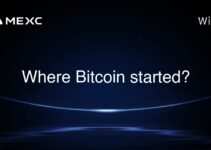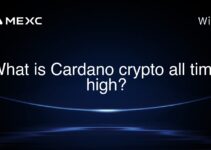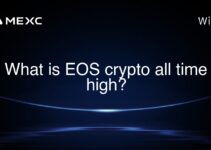XRP and PayPal serve fundamentally different purposes within the digital payment landscape. XRP is a digital currency used primarily for facilitating rapid and cost-effective cross-border money transfers on the Ripple network, while PayPal is an online payment platform that enables digital and mobile payments on behalf of consumers and merchants globally. Understanding these differences is crucial for investors, traders, and users when making informed decisions in the fintech space.
Why the Distinction Matters for Stakeholders
The distinction between XRP and PayPal impacts decision-making for various stakeholders in the financial technology sector. Investors and traders might look at XRP as a potential asset for portfolio diversification, betting on the growth of blockchain-based payment solutions. On the other hand, PayPal is considered a stable investment tied to the growth of e-commerce and digital transactions. Users, however, might choose between these platforms based on transaction fees, speed, and geographical availability.
Comparative Analysis: XRP vs. PayPal
Transaction Speed and Cost
XRP transactions are known for their speed, with settlement times of around 4-5 seconds, significantly faster than PayPal’s transaction processing times, which can take from a few minutes to days depending on the type of transaction and the involved banks. In terms of cost, XRP transactions require a minimal network fee (usually less than a cent), whereas PayPal’s fees can range from 2.9% + $0.30 per transaction for domestic transfers to higher rates for international transactions.
Market Adoption and Usage
As of 2025, PayPal continues to hold a significant share in the online payments market, with over 400 million active accounts. XRP, while not as widely adopted in the consumer payment sector, is increasingly used by financial institutions for international settlements. Notable partnerships, such as those with major banks and payment providers, have bolstered XRP’s credibility and market presence.
Regulatory Landscape
The regulatory environment for XRP has been more complex due to its classification as a digital currency. In contrast, PayPal operates within the well-established legal frameworks applicable to financial service providers. However, recent regulatory clarity around cryptocurrencies in various jurisdictions has begun to reduce uncertainty for XRP-related investments.
Updated 2025 Insights and Applications of XRP
By 2025, XRP has seen expanded use in cross-border transactions, particularly in emerging markets where traditional banking infrastructure is limited. For example, in regions like Southeast Asia and Africa, XRP has enabled faster and cheaper remittances compared to traditional banking systems. Furthermore, platforms like MEXC have positively contributed to the liquidity and accessibility of XRP, enhancing its usability and integration into various financial applications.
Technological Advancements
Technological improvements in the Ripple network, such as the introduction of sidechains and federated consensus algorithms, have further enhanced XRP’s performance, making it a more attractive option for large-scale financial operations.
Integration with Other Financial Tools
XRP’s integration with software solutions that manage treasury operations for multinational corporations has streamlined payments and foreign exchange management, reducing costs and operational complexities.
Relevant Data and Statistics
As per the latest reports, XRP’s transaction volume has grown by over 80% from 2023 to 2025, with significant contributions from the Asian and European markets. Additionally, the average transaction cost on the Ripple network remains below $0.01, making it one of the most cost-effective solutions for international money transfers.
Conclusion and Key Takeaways
While XRP and PayPal operate in the digital payments arena, they cater to different needs and markets. XRP is primarily a blockchain-based solution aimed at enhancing the efficiency of high-stakes, cross-border money transfers, particularly in terms of speed and cost. PayPal, meanwhile, remains a dominant force in consumer-focused digital payments worldwide. For investors and users, the choice between XRP and PayPal should consider factors such as transaction fees, speed, regulatory environment, and market adoption. Platforms like MEXC, which support XRP, offer robust opportunities for engaging with this cryptocurrency, potentially enhancing portfolio diversification and access to innovative financial technologies.
Ultimately, both XRP and PayPal will likely continue to play significant roles in the evolving landscape of digital payments, each addressing distinct challenges and opportunities within the ecosystem.



